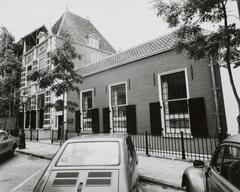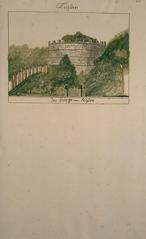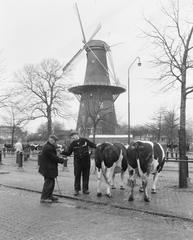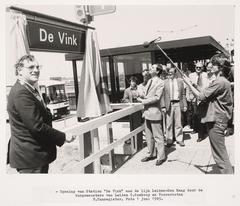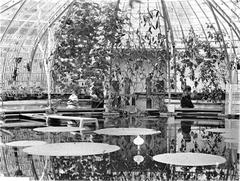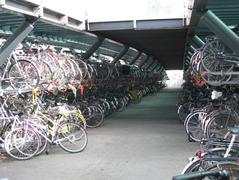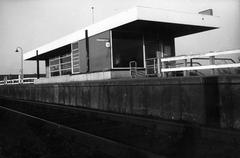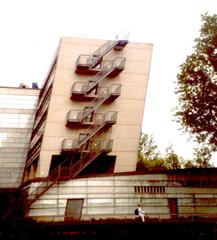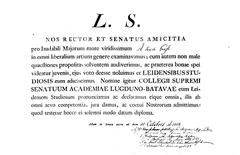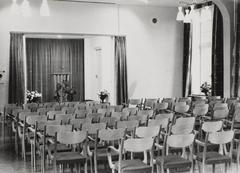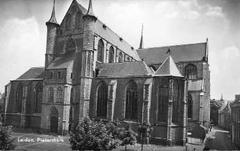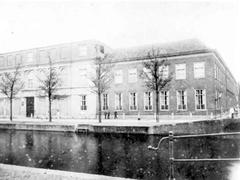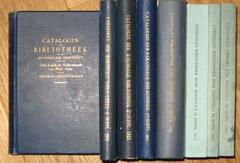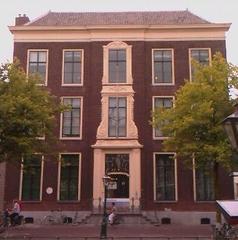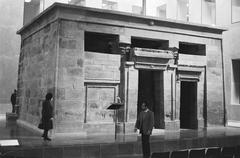
Complete Guide to Coebel Visiting Hours, Tickets, and Leiden Historical Sites
Date: 04/07/2025
Introduction to Coebel in Leiden: History and Significance
Nestled near the historic city of Leiden in the Netherlands, Coebel offers visitors a gateway into the region’s medieval past and its prominent role in Dutch history. Originally established as a 15th-century castle known as Waddingsvliet, Coebel’s legacy is intertwined with significant episodes such as its involvement in the Eighty Years’ War and the renowned Siege of Leiden. Although the castle was deliberately destroyed in 1573 to prevent it from falling into Spanish hands, the area remains a tapestry of historical narratives, archaeological discoveries, and cultural landmarks.
Today, visitors can explore the enduring legacy of the Coebel district through its charming hofjes (enclosed courtyards), architectural details from the Dutch Golden Age, and tranquil public spaces. These hofjes reflect Leiden’s tradition of community welfare and provide a unique perspective on the city’s social history. For those interested in military and political history, the area’s strategic significance during the Siege of Leiden is commemorated at nearby sites, including the remnants of city walls, the Lammenschans Monument, and the Siege of Leiden Museum. Archaeological excavations have further revealed medieval foundations and Roman-era relics, underscoring Leiden’s long and vibrant history.
This guide delivers practical information on visiting hours, ticketing, accessibility, and travel tips, alongside historical insights and recommendations for neighboring attractions. Whether you are a history enthusiast, a cultural traveler, or a curious explorer, Coebel and Leiden’s historic sites offer a meaningful journey into Dutch heritage. For further details and to plan your itinerary, consult the Leiden Tourism Official Website or download the Audiala app for immersive audio tours.
(References: Wikipedia - Coebel, VVV Leiden Official Website, National Museum of Antiquities Leiden)
Contents
- Introduction
- Origins and Construction of Coebel
- Ownership, Feudal Relations, and Industrial Activity
- Coebel During the Siege of Leiden
- Architectural Features and Archaeological Findings
- Visiting Coebel Today: What to Expect
- Visiting the Castle Site
- Markers and Commemoration
- Nearby Historical Attractions
- Travel Tips and Accessibility
- Legacy and Modern Commemoration
- Visiting Coebel and the Siege of Leiden
- Historical Background
- Strategic Importance
- Key Events of the Siege
- Commemoration and Memory
- Visiting Coebel and Leiden Historical Sites
- Visiting Hours and Tickets
- Key Historical Sites
- Guided Tours and Accessibility
- Best Times and Special Events
- Visual and Interactive Resources
- Exploring Archaeological Discoveries and Visitor Information
- Historical Context
- Major Discoveries
- Methodologies
- Current State
- Visitor Information
- Accessibility
- Special Events
- Visual Experiences
- Coebel Leiden: Visiting Hours, Tickets, and Historical Sites Guide
- Overview and Setting
- Visiting Details
- Attractions and Activities
- Practical Tips and FAQ
- Visuals and Media
- Related Articles
- Conclusion and Visitor Recommendations
- References
Exploring Coebel Castle Ruins: History, Leiden Attractions & Visitor Tips
Origins and Construction of Coebel (Waddingsvliet)
Coebel began as a castle constructed in the mid-15th century on land that was then part of Zoeterwoude, near modern Leiden (Wikipedia - Coebel). The likely builder was Willem Heerman, a notable Leiden patrician. Upon his death in 1465, his brother Aernd inherited the property, passing it through various feudal arrangements common to the time.
Initially known as Waddingsvliet, the castle’s name reflected its proximity to the Oude Vliet waterway, a vital artery for regional trade. The estate later became known as Coebel, after Dirk Coebel, a prominent 16th-century owner.
Ownership, Feudal Relations, and Industrial Activity
Ownership of the estate reflected shifts in family lines and feudal relationships. The Heerman family maintained control for several generations, with Aernd’s grandson Floris enfeoffed in 1482. After Floris’s death in 1493, his daughter Katrijn sold the property to Hendrik Florisz, who passed it to his daughter Vincentia. Vincentia’s marriage to Dirk Coebel around 1527 cemented the family’s name in local history.
During Dirk Coebel’s tenure, the estate engaged in both agriculture and industry, notably operating a lime kiln. This kiln led to legal disputes with Leiden’s authorities and the lord of Polanen, reflecting tensions between emerging industry and traditional feudal rights (Wikipedia - Coebel).
Coebel During the Siege of Leiden
Coebel’s most dramatic moment came during the Eighty Years’ War. In August 1573, anticipating Spanish forces’ advance, defenders burned the castle to prevent enemy occupation (Wikipedia - Beleg van Leiden). Spanish troops later constructed the Waddingerschans fortification on the former lime kiln site, indicative of the location’s strategic importance. The castle was never rebuilt, and the area reverted to agricultural use after the war.
Architectural Features and Archaeological Findings
Archaeological research has revealed the castle’s layout: a rectangular structure approximately 8 by 22 meters, encircled by a five-meter-wide moat (Wikipedia - Coebel). Excavations in the 1970s and 1980s confirmed multi-phase construction, but little remains above ground today. Since the 1990s, the area has been developed for housing and parking.
Visiting Coebel Today: What to Expect
Visiting the Castle Site
No visible ruins remain at the original Coebel castle site, which is now covered by modern development. No tickets or visitor centers are required or available.
Markers and Commemoration
On-site historical markers are minimal. For deeper context, local museums and historical societies in Leiden provide detailed exhibits and information.
Nearby Historical Attractions
Leiden is home to several accessible historic sites:
- Burcht van Leiden: A preserved medieval fortification with panoramic city views.
- Cronesteyn Castle: Another historic estate in the region.
- Siege of Leiden Museum: Exhibits focused on the city’s role in the Eighty Years’ War.
Travel Tips and Accessibility
- Getting There: Coebel’s former location is accessible by public transport or car. For historical context, focus your visit on Leiden’s city center and its museums.
- Accessibility: Most nearby attractions provide wheelchair access and visitor amenities; check specifics in advance.
- Guided Tours: Leiden walking tours frequently reference Coebel and the siege history, although no dedicated Coebel tours exist.
Legacy and Modern Commemoration
Although the physical structure has disappeared, Coebel’s name and legacy endure in local memory and institutions, such as Stichting Dierenweide ‘De Coebel’ (Voorschotense Krant).
Coebel and the Siege of Leiden: History, Visiting Hours, and Tickets
Historical Background and Strategic Importance
Leiden’s location on a low plain intersected by the Rhine made it a crucial defensive city during the Eighty Years’ War (1568–1648). Its fortifications included walls, moats, and bastions. Coebel, near the city’s ramparts and waterways, was significant during the siege, especially when strategic flooding helped lift the Spanish siege.
Siege of Leiden: Key Events
- First Siege (October 1573 – April 1574): Spanish forces led by Francisco de Valdez attempted to capture the city but withdrew due to strong defenses and unfavorable conditions.
- Second Siege (May – October 1574): Leiden faced severe shortages. William of Orange ordered dike breaches to flood surrounding land, enabling the Sea Beggars to break the siege.
- Relief of Leiden (October 3, 1574): The relief fleet reached Leiden after breaching the Landscheiding dyke, ending the siege—a victory commemorated annually as Leidens Ontzet.
Commemoration and Memory
Coebel is not a standalone monument but is remembered as part of Leiden’s defense network. The city’s liberation is celebrated each October 3rd with the Leidens Ontzet festival, featuring reenactments and public festivities.
Visiting Coebel and Leiden Historical Sites
Visiting Hours and Tickets
Coebel itself is open public space—no tickets or set visiting hours apply. Nearby historical sites, such as Museum De Lakenhal and the National Museum of Antiquities, have specific opening times and ticket prices:
- Museum De Lakenhal: Tuesday–Sunday, 11:00–17:00; tickets approx. €12.
- National Museum of Antiquities: Tuesday–Sunday, 11:00–17:00; adults €15, concessions available (National Museum of Antiquities Leiden).
Guided tours, including siege history and hofjes walks, can be booked via VVV Leiden.
Key Historical Sites
- City Walls and Ramparts: Open daily, free entry.
- Lammenschans Monument: Open year-round, no ticket required.
- Leiden Canals and Dikes: Publicly accessible, ideal for walks.
Guided Tours and Accessibility
The VVV Leiden offers guided tours focusing on Leiden’s siege history and hofjes. Most sites are accessible, although some ramparts feature uneven terrain; check with the tourist office for specific needs.
Best Times to Visit and Special Events
- Leidens Ontzet (October 3): Annual festival with historical reenactments.
- Spring and Early Autumn: Pleasant weather and fewer crowds.
Visual and Interactive Resources
Virtual tours, interactive maps, and high-quality imagery are available on Visit Leiden. These resources enhance both trip planning and on-site experiences.
Archaeological Discoveries and Visitor Information
Historical Context
Leiden’s continuous habitation since Roman times makes it a rich site for archaeological research. The Coebel area, within the medieval city footprint, has yielded Roman-era remains, early medieval artifacts, and high medieval urban features.
Major Discoveries
Excavations have uncovered pottery, coins, wooden structures, brick cellars, wells, and metalwork, offering insight into Leiden’s development.
Methodologies
Modern techniques—ground-penetrating radar, dendrochronology, GIS mapping—are used alongside public archaeology programs to engage the community.
Current State
Most archaeological remains are preserved beneath the city. Interpretive panels and walking trails like the Leidse Loper guide visitors to historical points of interest.
Visitor Information
- National Museum of Antiquities: Tuesday–Sunday, 11:00–17:00; adults €15, students/seniors €12, under 18 free.
- Leidse Loper Walking Trail: Self-guided route with interpretive stops (Leidse Loper Walking Trail).
Accessibility
Most museums and public sites offer wheelchair access and multilingual guides. Visitors should check specific locations for details.
Special Events
Regular guided tours and special events, such as National Finds Day, are hosted by Leiden’s museums and archaeological services.
Visual and Interactive Experiences
The museum and tourism websites feature reconstructions, interactive maps, and virtual tours. These are valuable for both remote and in-person exploration.
Coebel Leiden: Visiting Hours, Tickets, and Historical Sites Guide
Overview and Setting
Coebel is a historic area in Leiden’s city center, renowned for its hofjes—enclosed courtyards established as social housing. These spaces provide a tranquil retreat and insight into Leiden’s Golden Age social welfare traditions.
Visiting Details
- Hours: Most hofjes are open daily, 10:00–17:00; hours may vary by season and courtyard.
- Tickets: General access is free. Some guided tours or events require tickets; check with VVV Leiden.
- Guided Tours: Available in multiple languages, offering access to select hofjes and in-depth historical commentary.
Attractions and Activities
- Walking and Biking Tours: The Leiden Loop passes through historic neighborhoods, including Coebel.
- Nearby Museums: Museum De Lakenhal, National Museum of Antiquities, the Burcht, and Pieterskerk are all within walking distance.
- Dining: Enjoy canal-side cafés and diverse restaurants in the city center.
Practical Tips and FAQ
- Accessibility: Leiden’s compact center is walkable and bike-friendly; cobblestones may affect mobility.
- Etiquette: Respect hofje residents and property. Maintain quiet and avoid late visits.
- Events: Leidens Ontzet and Museum Night are highlights.
Visuals and Media
Interactive maps, virtual tours, and high-quality images can be found on the Leiden Tourist Office website. Suggested alt text includes “Coebel hofje courtyard in Leiden” and “Historic facades in Coebel Leiden.”
Related Articles
Summary of Key Points and Visitor Recommendations
Though Coebel Castle’s remains have vanished, its story is deeply woven into Leiden’s heritage. The site’s dramatic history, especially during the Eighty Years’ War, offers a narrative of resilience and transformation. Today, visitors can explore Coebel’s legacy through hofjes, archaeological discoveries, and connections to broader city landmarks.
To enrich your visit, explore nearby sites such as the Burcht van Leiden, Cronesteyn Castle, the Siege of Leiden Museum, and the National Museum of Antiquities. Leiden’s annual Leidens Ontzet festival commemorates the city’s liberation, reflecting a vibrant local spirit.
Guided tours from VVV Leiden and the Audiala app deliver expert commentary and navigation. Most of Leiden’s historic core is accessible, though cobblestones and narrow streets may require attention. Whether wandering tranquil courtyards or exploring city ramparts, Coebel and its surroundings offer a unique connection to Dutch history.
For current events, exhibitions, and visitor services, consult the Leiden Tourism Official Website and National Museum of Antiquities. Discover why Coebel endures as a cherished part of Leiden’s—and the Netherlands’—cultural memory.
References and Useful Links
- Wikipedia - Coebel
- VVV Leiden Official Website
- National Museum of Antiquities Leiden
- Leidse Loper Walking Trail
- ARCHON Archaeological Network
- Wikipedia: Siege of Leiden
- Beacon of Truth: The Siege of Leiden
- Wikiwand: Siege of Leiden
- Try Travel: Things to Do in Leiden
- Dutch Wannabe: Things to Do in Leiden
- Voorschotense Krant
- Leiden City of Culture
- Hidden Gems of Leiden
- Leiden Tourist Map



